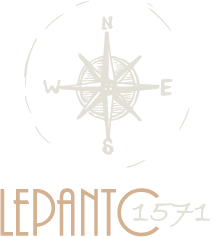Naval battles in the Corinthian Gulf in the course of the Peloponnesian War (429 B.C.)
On the third year of the Peloponnesian war Aetolia and Akarnania became the theatre of increased hostility between the citizens of Amvrakia and the tribal nation of the Akarnanians. The Amvrakiots, who controlled the countryside around Amphilochia already since 430 B.C., had not managed to conquer the city itself, which was in Akarnanian hands. The latter, aided by Athens, could always avert attacks. Τhus, the Amvrakiots called for support from Sparta, which accepted, with the prospect of controlling Aetolia and Akarnania.Military activities
Upon noticing the intensification of hostilities in Aetoloakarnania, the Athenians sent the admiral Phormion with 20 triremes to patrol the Corinthian Gulf. Sparta was particularly afraid of Athenian control of Naupaktos. By controlling the city the Athenians not only secured the commercial routes to their colonies in Corfu and Sicily, but they also had the chance to attack Corinth, one of the most powerful allies of Sparta. For the same reason Naupaktos was to the Spartans as important as the territories in Aetoloakarnania. Thus they mustered about 1000 hoplites led by general Knemos who aimed at passing unnoticed by Phormion and land at Aetoloakarnania via Leukada. He managed to do so, but he failed to win the battle against the Akarnanians due to hasty movements and he then retreated. Simultaneously the main naval force of the Spartans, under the assumption that Phormion would break his force in two in order to aid the Akarnanians against Knemos, sailed off from Corinth with 47 ships and headed west to the opening of the Corinthian Gulf. They planned to land there in order to offer support to Knemos and his troops.The first naval battle at Patras, 429 B.C.
The clash between the two fleets took place in the open sea beyond the Gulf of Patras after long parallel sail. The Spartans believed that due to their superiority in arms Phormion would not attack. On the contrary the Athenian admiral aimed at making full use of the difference in quality between the two fleets: the 20 triremes of the Athenians were pure battleships, whereas the fleet of the Lacedemonians comprised mainly trade ships able to carry a large number of hoplites. Phormion started his attack at dawn, positioned at the NW of Patras, right at the point where the Peloponnesian fleet attempted to cross over to Aetolia (just before present-day Rio-Antirrio cross). At that time the Lacedemonians were in the open sea, suffering greatly by wind and waves. Phormion knew that in the morning there blew a NE wind in the Gulf of Patras and thus he attempted to profit from the natural elements. Upon seeing the Athenian fleet attacking, the Spartants followed the tactics of Eurybiades at the naval battle of Artemision (480 B.C.): they formed a circle in the centre of which they placed the auxiliary and unfit for battle ships. However, the strong northeastern wind led the Spartan ships so close to one another that they could not perform ελιγμούς. Then Phormion attacked with his slank and easy to move triremes, sending very soon the flagship of the Peloponnesian fleet to the bottom of the sea. The victory of the Athenians was a fact.The second naval battle at Naupaktos, 429 B.C.
After their defeat the Lacedemonians fled to the area of Rio and met the fleet of Knemos, raising their power to 77 ships. The Athenians with their 20 triremes had moved to the opposite shor at present-day Antirrion. The leaders of the Pelponnesians, fearing another attack by Phormion, decided to move first and spread their fleet in groups of four ships at the western part of the Gulf of Patras, thus making clear that they aimed at attacking Naupaktos. Phormion, realizing the threat against Naupaktos, restructured their fleet and moved along the shore of Locris spreading his ships at a straight line. The naval battle started with the Lacedemonians first pressing against the Athenian ships and leading them to the shallow waters. Nine of them fell ashore while the Peloponnesian forces attempted to recuperate them. The infantry of the Messenians which was camped at that spot rushed to help their Athenian allies. It attacked the Lacedemonians who attempted to track from the sand the recuperated Athenian ships. Thus the Messenians managed to bring back under Athenian control several of these ships. στην ακτή ενώ την ίδια στιγμή οι Πελοποννησιακές δυνάμεις προσπάθησαν να τα οικειοποιηθούν. At the other front of the sea-battle the rest of the 11 Athenian ships moved towards Naupaktos followed by 20 Peloponnesian ones. At the moment when everything pointed to a heavy defeat of the Athenians, according to Thucydides, something unexpectable happened: a ship from leukada, chasing the laste Athenian trireme, was impeded by a trade ship which sailed in this area. Then, the Athenian trireme pivoting around the trade ship managed to crash the right side of the Peloponnesian ship. Upon seeing this movement the rest of the Athenian ships attacked the Lacedemonians, who thus got confused and lost the battle, whereas everything pointed otherwise.



